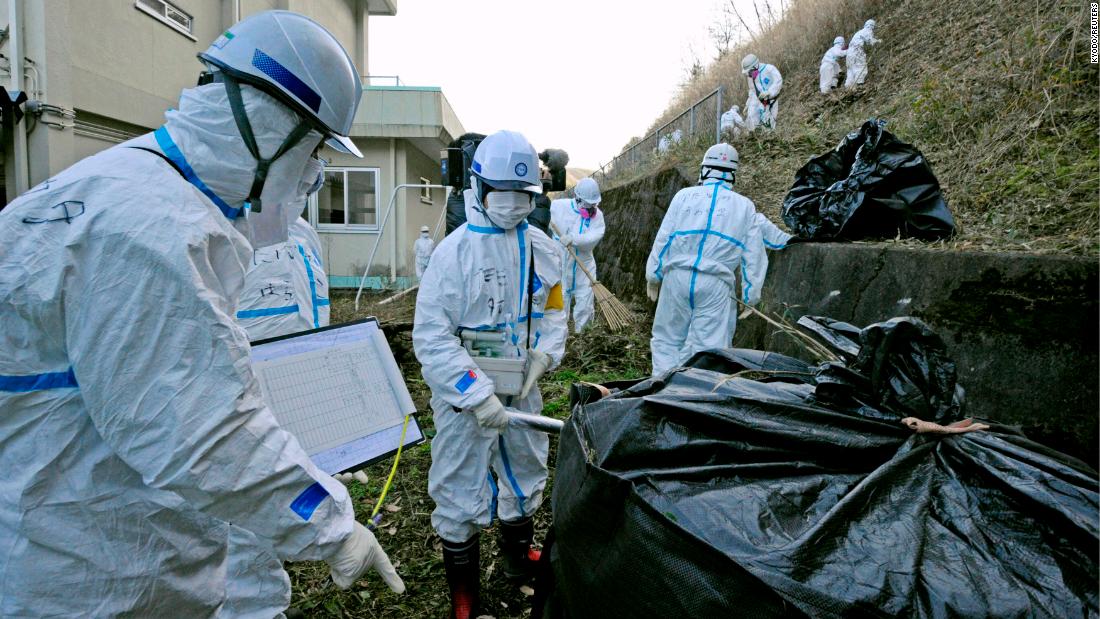
Kazunori Iwayama, a former resident of Katsurao village, which lies about 40 kilometers (24 miles) from the Fukushima Daiichi plant stated, “It appears like we in the end reached the place to begin and will center of attention on bringing issues again to customary.”
On March 11, 2011, a 9.0 magnitude earthquake struck off the rustic’s coast, triggering a tsunami that led to a nuclear meltdown on the energy plant and a significant free up of radioactive subject matter. It was once the arena’s worst nuclear crisis since Chernobyl in 1986.
On Sunday, Iwayama watched as a gate blockading get right of entry to to his house in Katsurao’s Noyuki district was once reopened at 8 a.m. native time. Evacuation orders for many of the village had been lifted in June 2016, permitting registered citizens to return and cross, stated a village reputable, who declined to be known as is normal in Japan. Maximum who’ve returned since 2016 are senior voters.
Some families on the other hand, are nonetheless looking ahead to their sections of the village to be decontaminated, in step with the reputable.
Japan’s High Minister Fumio Kishida stated this month the outlet will be the first time citizens had been allowed to reside once more in Katsurao’s Noyuki district, dubbed the “difficult-to-return” zone, a space with top ranges of radiation as much as 50 millisieverts.
Global protection watchdogs counsel annual doses of radiation are saved beneath 20 millisieverts, the identical of 2 full-body CT scans.
The Jap executive concluded that radiation ranges had fallen sufficiently for citizens to go back, even though the determine hasn’t been launched.
For now, simply 4 families out of 30 stated they intend to go back to the Noyuki district, stated the village reputable.
Ahead of the crisis, Katsurao village had a inhabitants of round 1,500 other folks. A lot of those that left have rebuilt their lives in other places, the reputable stated.
As of March 2020, most effective 2.4% of Fukushima prefecture remained off-limits to citizens, with even portions of that house obtainable for brief visits, in step with Japan’s Ministry of Setting.
However there stays extra paintings to be executed.
The Katsurao village reputable stated about 337 sq. kilometers of land in seven Fukushima municipalities are deemed “difficult-to-return” zones. Of the ones, simply 27 sq. kilometers in six of the similar municipalities are specified reconstruction zones.
“Because of this extra paintings is wanted and different households are looking ahead to the spaces they used to reside in to be decontaminated and restored to customary,” he stated.
Later this month, restrictions are anticipated to be partly lifted on Futaba and neighboring Okuma — cities house to the Fukushima Daiichi nuclear energy plant — and a equivalent easing is scheduled in an extra 3 municipalities in 2023, the reputable stated. He added {that a} timeline for spaces outdoor the reconstruction bases has no longer been determined.
“That is one milestone,” Hiroshi Shinoki, the mayor of Katsurao village, advised newshounds on Sunday. “It’s our responsibility to take a look at and produce issues again up to we will be able to to how they had been 11 years in the past.”
Shinoki stated that he sought after to revitalize native agriculture — a key trade within the house — to lure citizens again.
“It appears like other folks have forgotten about Fukushima — however we are nonetheless getting better,” stated resident Iwayama. “Our rice, vegetables and fruit are customary…we might like other folks to understand this produce is secure,” he stated.
